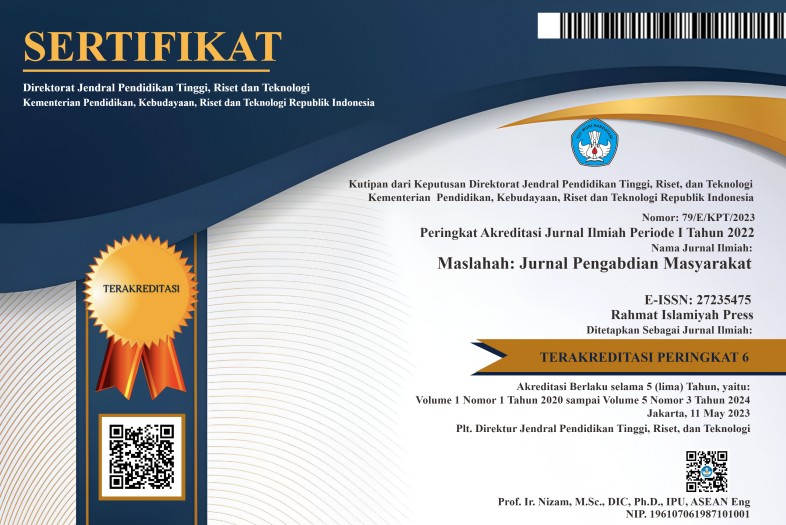Implementation of Digital Educational Technology in Thematic Learning for Children at Tadika Al-Fikh Orchard Malaysia
Abstract
Full Text:
PDFReferences
Asma, N., & Setiawan, H. R. (2025). Peran guru PAI dalam membentuk karakter siswa di SMK Swasta Mulia Medan. Jurnal Pendidikan Sosial dan Humaniora, 4(4), 7082–7093.
Berk, L. E. (2013). Child development (9th ed.). Pearson.
Bransford, J. D., Brown, A. L., & Cocking, R. R. (2000). How people learn: Brain, mind, experience, and school. National Academy Press.
Clark, R. C., & Mayer, R. E. (2016). E-learning and the science of instruction (4th ed.). Wiley.
Domingo, M. G., & Garganté, A. B. (2016). Exploring the use of educational technology in early childhood education. Computers in Human Behavior, 55, 462–471.
Fogarty, R. (2009). How to integrate the curricula. Corwin Press.
Hew, K. F., & Brush, T. (2007). Integrating technology into K–12 teaching and learning: Current knowledge gaps and recommendations. Educational Technology Research and Development, 55(3), 223–252.
Johnson, D. W., & Johnson, R. T. (2019). Joining together: Group theory and group skills (12th ed.). Pearson.
Mayer, R. E. (2009). Multimedia learning (2nd ed.). Cambridge University Press.
Mishra, P., & Koehler, M. J. (2006). Technological pedagogical content knowledge: A framework for teacher knowledge. Teachers College Record, 108(6), 1017–1054.
Piaget, J. (1972). The psychology of the child. Basic Books.
Prensky, M. (2010). Teaching digital natives: Partnering for real learning. Corwin Press.
Reiser, R. A., & Dempsey, J. V. (2018). Trends and issues in instructional design and technology (4th ed.). Pearson Education.
Juliana, J., & Setiawan, H. R. (2025). Analysis of Islamic religious education learning methods in improving student learning motivation in Malaysia. Ahlussunnah: Journal of Islamic Education, 4(2), 181–193.
Nurjannah, I., Jannah, E. M., Syafinka, N., Setiawan, H. R., & Nabilah, W. (2025). The development of a project-based learning model in Islamic education to enhance students’ creativity. Kitabah: Jurnal Pendidikan Sosial Humaniora, 3(3), 156–167.
Setiawan, H. R., Wirian, O., & Wulandari, R. (2025). Innovation in the development of learning media management in the context of Islamic education at Santi Witya Serong School, Thailand. Al-Ulum: Jurnal Pendidikan Islam, 6(3), 722–734.
Suryaningsih, A., & Setiawan, H. R. (2025). Strategi guru PAI dalam meningkatkan minat belajar siswa terhadap pembelajaran PAI di Sekolah SMK Mulia. Jurnal Pendidikan Sosial dan Humaniora, 4(4), 7094–7107.*
Tambak, A., Setiawan, H. R., Nurdianti, N., Lestari, S. P., & Intan, N. (2025). An analysis of the implementation of formative evaluation as an effort to improve students’ academic achievement. Kitabah: Jurnal Pendidikan Sosial Humaniora, 3(3), 145–155.
DOI: https://doi.org/10.56114/maslahah.v6i3.12775
Refbacks
- There are currently no refbacks.
ISSN 2723-5475 (Online)



